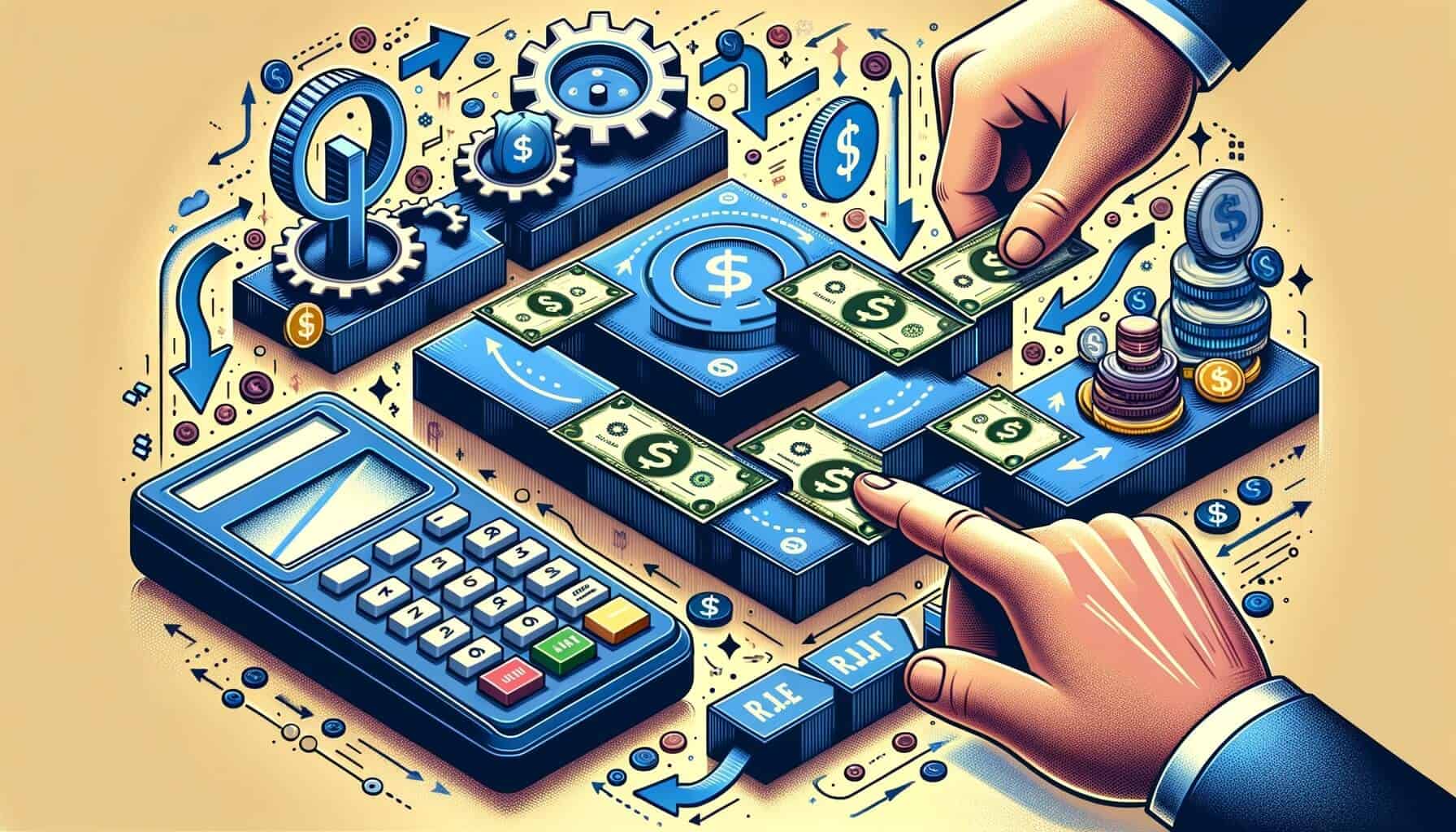
By Barbara Thomas March 11, 2025
In today’s digital age, online transactions have become an integral part of our daily lives. Whether it’s purchasing goods or services, paying bills, or transferring funds, electronic payments have made our lives more convenient. However, there are instances when a payment needs to be reversed.
This article aims to provide a comprehensive understanding of payment reversals, how they work, common reasons for their occurrence, the process of initiating a payment reversal, steps to prevent them, and their impact on businesses and consumers.
Understanding the Concept of Payment Reversals
A payment reversal, also known as a chargeback, is a transaction that is reversed, resulting in the funds being returned to the payer. It is a mechanism that allows consumers to dispute a transaction and request a refund from their bank or credit card issuer. Payment reversals can occur for various reasons, such as fraudulent activity, dissatisfaction with a product or service, or errors in processing the transaction.
How Does a Payment Reversal Work?

When a consumer initiates a payment reversal, the process typically involves several parties, including the consumer, the merchant, the acquiring bank, and the issuing bank. Here’s a step-by-step breakdown of how a payment reversal works:
1. Consumer Disputes the Transaction: The consumer contacts their bank or credit card issuer to dispute the transaction and request a refund. They provide details about the transaction, such as the date, amount, and reason for the dispute.
2. Bank Investigates the Dispute: The bank initiates an investigation to determine the validity of the dispute. They may request additional information from the consumer and the merchant to gather evidence.
3. Merchant Responds to the Dispute: The merchant receives a notification about the dispute and has the opportunity to respond with evidence supporting the validity of the transaction. This may include proof of delivery, customer communication, or any other relevant documentation.
4. Bank Makes a Decision: Based on the evidence provided by both parties, the bank makes a decision regarding the dispute. If the bank finds in favor of the consumer, a payment reversal is initiated, and the funds are returned to the consumer’s account.
5. Merchant’s Account is Debited: In the event of a payment reversal, the merchant’s account is debited with the disputed amount, along with any associated fees. This can have a significant impact on the merchant’s cash flow and profitability.
Common Reasons for Payment Reversals

Payment reversals can occur for various reasons, and it’s essential for both consumers and merchants to be aware of these common causes. Some of the most frequent reasons for payment reversals include:
1. Fraudulent Activity: If a consumer’s payment information is stolen or used without their authorization, they may initiate a payment reversal to recover their funds.
2. Dissatisfaction with Product or Service: If a consumer is dissatisfied with a product or service they have purchased, they may request a payment reversal as a means of obtaining a refund.
3. Unauthorized Transaction: If a consumer notices a transaction on their account that they did not authorize, they may dispute it and request a payment reversal.
4. Processing Errors: Sometimes, errors can occur during the processing of a transaction, resulting in incorrect amounts being charged or duplicate charges. In such cases, a payment reversal may be necessary to rectify the error.
5. Non-Delivery of Goods: If a consumer has paid for goods that were never delivered, they may initiate a payment reversal to recover their funds.
The Process of Initiating a Payment Reversal

Initiating a payment reversal can vary depending on the payment method used and the policies of the bank or credit card issuer. However, there are some general steps that consumers can follow to initiate a payment reversal:
1. Contact the Bank or Credit Card Issuer: The consumer should contact their bank or credit card issuer as soon as they notice an unauthorized or fraudulent transaction. They should provide all relevant details about the transaction and explain the reason for the dispute.
2. Provide Supporting Documentation: The consumer should gather any supporting documentation that can help prove their case, such as receipts, emails, or any other evidence of communication with the merchant.
3. Follow the Bank’s Dispute Resolution Process: The bank or credit card issuer will guide the consumer through their dispute resolution process. This may involve filling out a dispute form, providing additional information, or submitting the supporting documentation.
4. Cooperate with the Investigation: It’s crucial for the consumer to cooperate fully with the bank’s investigation. They may be required to provide additional information or answer questions to help resolve the dispute.
5. Await the Bank’s Decision: Once the investigation is complete, the bank will make a decision regarding the dispute. If the decision is in favor of the consumer, a payment reversal will be initiated, and the funds will be returned to their account.
Steps to Prevent Payment Reversals
While payment reversals can be a hassle for both consumers and merchants, there are steps that can be taken to prevent them from occurring in the first place. Here are some measures that consumers and merchants can implement to minimize the risk of payment reversals:
For Consumers:
1. Keep Payment Information Secure: Consumers should take precautions to keep their payment information secure. This includes not sharing their card details with anyone and regularly monitoring their accounts for any unauthorized transactions.
2. Read Terms and Conditions: Before making a purchase, consumers should read and understand the terms and conditions of the transaction. This can help avoid misunderstandings and disputes later on.
3. Communicate with the Merchant: If a consumer is dissatisfied with a product or service, they should first try to resolve the issue directly with the merchant. Open communication can often lead to a satisfactory resolution without the need for a payment reversal.
4. Use Secure Payment Methods: When making online purchases, consumers should use secure payment methods, such as credit cards or trusted payment gateways. These methods offer additional protection against fraudulent transactions and provide avenues for dispute resolution.
For Merchants:
1. Provide Clear Refund Policies: Merchants should have clear and transparent refund policies in place. This helps manage customer expectations and reduces the likelihood of disputes and payment reversals.
2. Maintain Accurate Records: Merchants should keep accurate records of all transactions, including receipts, invoices, and any communication with customers. These records can be crucial in resolving disputes and providing evidence in case of a payment reversal.
3. Respond Promptly to Customer Inquiries: Timely and responsive customer service can go a long way in preventing payment reversals. Merchants should promptly address customer inquiries and concerns to avoid escalation to a dispute.
4. Implement Fraud Prevention Measures: Merchants should implement robust fraud prevention measures to minimize the risk of fraudulent transactions. This may include using secure payment gateways, verifying customer information, and monitoring for suspicious activity.
Impact of Payment Reversals on Businesses and Consumers
Payment reversals can have significant implications for both businesses and consumers. Understanding these impacts is crucial for all parties involved. Let’s explore the effects of payment reversals on businesses and consumers:
Impact on Businesses:
1. Financial Loss: Payment reversals can result in significant financial losses for businesses, especially small and medium-sized enterprises (SMEs). The debiting of funds from their accounts can affect cash flow and profitability.
2. Administrative Burden: Dealing with payment reversals can be time-consuming and resource-intensive for businesses. It involves gathering evidence, responding to disputes, and managing the overall dispute resolution process.
3. Damage to Reputation: Frequent payment reversals can damage a business’s reputation and erode customer trust. Consumers may be hesitant to make purchases from a merchant with a history of payment reversals.
4. Increased Costs: Payment reversals often come with associated fees and penalties imposed by banks and credit card issuers. These additional costs can further impact a business’s bottom line.
Impact on Consumers:
1. Delayed Refunds: While payment reversals are intended to provide consumers with a refund, the process can be time-consuming. Consumers may have to wait for the bank’s investigation to be completed before receiving their funds.
2. Inconvenience and Frustration: Dealing with a payment reversal can be a frustrating experience for consumers. It involves contacting the bank, providing documentation, and waiting for a resolution, which can be inconvenient and time-consuming.
3. Potential Loss of Funds: In some cases, consumers may not be successful in initiating a payment reversal, resulting in a loss of funds. This can be particularly challenging if the transaction involved a significant amount of money.
4. Impact on Credit Score: If a payment reversal is not resolved in a timely manner, it can have a negative impact on a consumer’s credit score. This can affect their ability to obtain credit in the future.
Frequently Asked Questions about Payment Reversals
Q1. What is the difference between a payment reversal and a refund?
Answer: A payment reversal is initiated by the consumer and involves disputing a transaction and requesting a refund from the bank or credit card issuer. A refund, on the other hand, is typically initiated by the merchant and involves returning funds to the consumer directly.
Q2. Can a payment reversal be reversed?
Answer: In some cases, a payment reversal can be reversed if new evidence is presented or if the initial decision was made in error. However, this process can be complex and may require further investigation by the bank or credit card issuer.
Q3. How long does a payment reversal take?
Answer: The duration of a payment reversal can vary depending on various factors, such as the complexity of the dispute, the responsiveness of the parties involved, and the policies of the bank or credit card issuer. It can take anywhere from a few days to several weeks for a payment reversal to be resolved.
Q4. Can a payment reversal be prevented?
Answer: While it may not be possible to prevent all payment reversals, there are steps that consumers and merchants can take to minimize the risk. These include keeping payment information secure, maintaining clear refund policies, and implementing fraud prevention measures.
Q5. What should I do if I notice an unauthorized transaction on my account?
Answer: If you notice an unauthorized transaction on your account, you should contact your bank or credit card issuer immediately. They will guide you through the dispute resolution process and help initiate a payment reversal if necessary.
Conclusion
In conclusion, payment reversals are an essential aspect of the digital payment ecosystem. Understanding how they work, the reasons for their occurrence, and the steps to prevent them is crucial for both consumers and merchants.
Payment reversals can have significant financial and operational implications for businesses, while consumers may face inconvenience and potential loss of funds. By implementing preventive measures and maintaining open communication, both parties can minimize the occurrence of payment reversals and ensure a smoother and more secure payment experience.